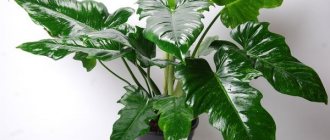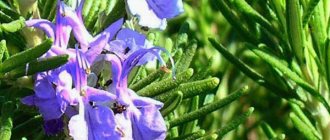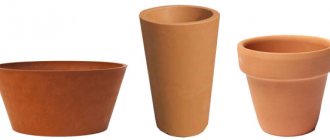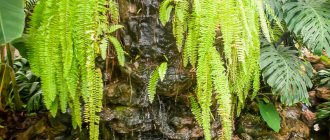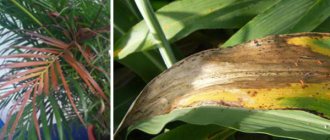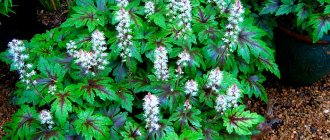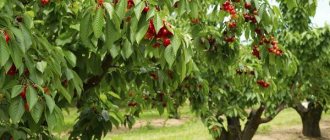- Sundew plant: the original carnivorous houseplant
- Sundew plant: a mini-format predator from peat bogs
- Sundew plant: growth, leaves and flowering
- Types of domestic sundews
- Capricious types of sundews
- Growing sundews at home
- Lighting and placement
- Temperature and ventilation
- Caring for sundew plants at home
- Watering and air humidity
- Top dressing and fertilizer composition
- Transplantation, containers and substrate
- Diseases, pests and problems in growing sundews
- Reproduction of sundews
- Video: sundew plant, home care
Sundew plant: the original carnivorous houseplant
Among predator plants, the sundew rightly claims to be the brightest and most expressive beauty. This plant attracts, first of all, its unusual textures and play of colors. But the feeding mechanism of this swamp and quite hardy miracle is so exotic that it is very easy to forget about sundews as plants, primarily ornamental ones. Sundews require the creation of special conditions of detention; they are quite demanding in terms of humidity, but they are easier than many rarer indoor predators to grow in ordinary living quarters. And caring for them cannot be called very difficult.
Sundew plant: the original indoor predator.
Sundew - a predator plant
Sundew (Drosera) belongs to the herbaceous carnivorous perennials of the Sundew family. There are more than 150 species of this carnivorous plant, most of which grow in the warm New Zealand, South American, Australian and African climates. Drosera is also found in more severe, cold northern regions, with the only exception being Antarctica.
Sundew and insects
Droseraceae, as the name of the genus of these unusual plants sounds in Latin, literally means “covered with dew.” This is exactly what small drops of sticky, aromatic secretion look like, located at the ends of reddish glandular hairs covering the leaf blades. The odorous substance they produce attracts insects flying by, which, having settled on the leaf, stick tightly to it and are immobilized by a sticky secretion containing paralytic alkaloids.
Then the trap slowly slams shut and the digestive process begins with the participation of organic acids and enzymes. Digestion of food usually takes several days. In this extremely original way, the flower feeds, receiving the substances it needs for development.
Sundew plant: a mini-format predator from peat bogs
The fashion for exoticism has made carnivorous plants quite popular. The sundew gives the impression of a plant that is not just extravagant, but very beautiful. Her “predation” is not so striking.
Sundew is often called a sticky plant or a trap plant and is promoted as a crop that can rid your home of insects. But the sundew's ability to fight annoying mosquitoes and flies is exaggerated. And it would be a big mistake to use it instead of repellent devices, nets and adhesive tapes. Sundew should become the star of the collection, and not an analogue of fumigators.
Sundews represent the family of the same name - Sundewaceae. They grow in peat bogs of all continents and are often adjacent to shrubs of the heather family.
The fact that sundews are predators does not mean that the plant is completely dependent on animal food. The combination of the usual (and main) method of obtaining nutrients, thanks to photosynthesis, and the digestion of animal food in sundews is unique.
This carnivorous plant is considered more aesthetically pleasing than its competitors. After all, the sundew not only “feeds” quite slowly, but also does not emit unpleasant odors.
Sundew attracts insects with the shine of its drops, which shimmer in the sun. It feeds on small insects - mosquitoes, ants and small flies that stick to the hairs. The mechanism of leaf folding is triggered by the movements of the insect, which, when trying to escape, sticks more and more to the hairs.
The hairs react instantly, starting to bend over the insect and triggering the leaf folding mechanism. The sundew is able to hold a fly for half an hour without curling the leaves, but in most species the edges of the leaves curl up in a few minutes.
Inside the leaf rolled into a tube, the “prey” is digested for two weeks, thanks to enzymes in the mucus, after which the leaf straightens out again. Nutrients formed during digestion are absorbed by leaf cells, and the chitinous skeleton remains on the surface. Transparent drops and beautiful leaves return to their original appearance quite quickly, a few days after the leaf opens.
The sundew is able to hold a fly for half an hour without folding the leaves.
How and what does sundew eat?
The fact that a plant is a predator does not mean that it depends only on receiving live food. After all, if there are no insects, the flower feeds like an ordinary plant.
To catch prey, the plant first attracts the insect with the shine of a dew-like droplet, which is actually a sticky digestive enzyme. When the victim touches the leaf, it sticks.
After 10-20 minutes, the eyelash to which the victim is stuck bends towards the center of the leaf. Neighboring cilia also bend, causing the insect to suffocate. At the end of everything, the edge of the sheet plate is bent and the trap slams shut. This plant reaction occurs only to protein foods , while the flower does not react to other substances.
During the digestion of food, the cilia secrete special enzymes that are similar to pepsin (animal stomach juice). With their help, protein is broken down, allowing the plant to eat lunch. When the process is completed, the leaf opens and only the remains of the victim (chitinous shell) can be seen on it. After this, the cilia straighten, become covered with a sticky secretion resembling dew, and again lure a new victim. Sometimes the sundew takes several days to digest its food.
Favorite delicacy of carnivorous plants?
HamstersFlies
Sundew plant: growth, leaves and flowering
Sundews are miniature and very neat plants, developing mainly in width. They produce compact, flat rosettes of basal leaves. The root system of sundews is very weak; it does not provide the plant with nutrition from the soil and only plays the role of holding the bushes in the soil. With bushes only up to 10 cm in height, sundews can produce quite long, up to 30 cm, flower stalks.
The leaves of the plant are unusual, round or oval in shape, sitting on fairly long and thick petioles; in some species they are sessile and thin, reminiscent of blades of grass. The size of the leaves ranges from 0.5 cm to almost 50 cm, but indoor sundews do not grow leaves larger than 10 cm.
Long, thick, translucent reddish hairs are quite dense. Sundews produce sensitive hairs with a gland on the edge, which secrete luminous, transparent, sticky droplets of mucus that shine in the sun.
Of course, it is primarily designed to catch insects, but the shining drops on large, thick hairs give the plant a certain charm. The edge on the leaves of sundew is difficult to compare with other indoor plants, because everything in this culture is special. As if covered with small drops of dew, the plant looks very decorative and attractive.
The flowering of sundews does not spoil the appearance of the plant at all. White, pink or red, the flowers in spikes and panicles of these predatory stars swing on long stalks high above sticky rosettes and pleasantly surprise with their grace.
Sundews usually bloom in the spring. The double perianth emphasizes the beauty of the corolla, which consists of a pair of petals (from 4 to 8). After flowering, sundews develop fruit capsules that hide rather small seeds. Pollination occurs differently in different sundews; pollen in indoor ones must be transferred artificially.
Before deciding to purchase sundews, you should carefully study the characteristics of this plant. Like any other indoor predator, the sundew should be accompanied by “instructions” with a detailed description of the conditions necessary for the plant, feeding habits and cultivation nuances. You should not purchase a plant without complete information about the type of plant and the specifics of care. The key information is whether the plant can grow without a florarium or display case.
Sundews usually bloom in the spring.
Description of a carnivorous plant
As mentioned above, the sundew is a predator and feeds on insects, but what does the plant do to those who are seduced by its bright appearance and aroma?
Midges, mosquitoes and small insects land on droplets of liquid located at the tips of the leaves, and then stick. To prevent the victim from escaping, the plant bends and covers the prey with sticky mucus.
The paralytic components contained in the liquid immobilize the insect, after which they begin to digest it. This process can last from a few minutes to a week, after which the leaves unfold again and wait for new prey.
The sundew's nutrition is slightly reminiscent of the digestive system in animals - enzymes and chemical compounds that make up the mucus help soften quinine and break down insects into simple substances that the plant can absorb.
Botanical scientists have conducted many experiments related to the way sundews feed. It has been established that it can digest even thin pieces of cartilage and bones, but the plant does not react to small debris sticking to the leaves. Its hairs and digestive system are activated only when they are exposed to something of nutritional value.
Types of domestic sundews
The number of sundew species, which are not always easy to distinguish from each other, exceeds a hundred.
In nature, in the middle zone, the round-leaved sundew (Drosera rotundifolia) is found - a rather beautiful marsh plant that lives in peat bogs and is very similar to its indoor relatives. Sometimes wild sundews are transferred to potted form, but in order for such plants to take root, they must be dug up with the soil in which they grew and kept only in florariums or flower displays.
Round-leaved sundew (Drosera rotundifolia).
In indoor culture, there are mainly two unpretentious species of sundews, distinguished by both compactness and greater decorativeness. But other, more capricious species can also be grown as potted plants. In total, more than ten species of sundews are considered adapted to greenhouse and indoor culture.
Cape sundew (Drosera capensis) is the most popular and unpretentious species of indoor predators with amazingly beautiful, elongated-lanceolate, reddish or light green leaves in a fairly dense rosette with a unique red sticky pubescence. Peduncles up to 20 cm high are crowned with an inflorescence of a dozen bright pink flowers.
Cape sundew (Drosera capensis).
Alice or Alicia sundew (Drosera aliciae) is one of the most common sundew species, famous for its unpretentiousness and forming symmetrical, flower-like rosettes of elongated oval leaves arranged in tiers. The reddish edge of belt-like fibers gives the plant an elegant appearance. The transition from rusty at the edges of the leaves to a yellowish-green hue at the base further attracts attention to this sundew.
Alice or Alicia sundew (Drosera aliciae).
Varieties and photos
There is a wide variety of varieties of this exotic predator that grow successfully in a variety of conditions. Below are photos, names and descriptions of sundew varieties suitable for propagation and care at home:
Round-leaved
This is the most common winter-hardy sundew species, which is found in peat bogs in the temperate climate zone of Russia, Asia, America and Europe. When growing a wild specimen in potted form, the plant must be supplemented with the soil in which it grew.
The round-leaved sundew has rounded basal leaves on which there are red cilia that secrete sticky mucus.
The length of the flower stem reaches 20 cm.
The plant blooms in mid-summer, blooming small white flowers. The fruits ripen at the end of summer and are a single-locular capsule. Round-leaved sundew reproduces by seeds, which are collected and sown in greenhouses, laid on the surface of moist peat soil.
To survive the cold season, the plant forms special wintering buds in advance, which are hidden in sphagnum moss. When spring comes, the sun warms up and the snow begins to melt, annual shoots appear from the buds. The photo below shows Sundew Roundifolia:
Cape
This is the most beautiful and unpretentious species of predator, which is most often grown at home. Cape sundew grows all year round, easily adapting to any living conditions.
This plant reaches a height of only 12 cm and is characterized by beautiful, elongated lanceolate leaves of a light green or reddish hue. The leaves sit in a dense rosette and on each of them there are red tentacles with a sticky secretion. The Cape sundew takes several days to digest its food. The flower stalks reach 20 cm in height and are crowned with inflorescences of bright pink flowers. You can see what the Cape Rosyanka variety looks like in the photo below:
English
This type of sundew is common in Ukraine, Belarus, Russia, the Caucasus, Central Asia and the Hawaiian Islands, choosing damp, sandy places and sphagnum bogs.
The English sundew reaches a height of 7-25 cm, the length of thin lanceolate leaves, located on long petioles and directed upward, reaches 10 cm. The plant blooms in mid-summer, producing white flowers. The fruit is a single-locular capsule containing grayish-brown seeds. In the photo below is the English Rosyanka variety:
Capricious types of sundews
Adele's sundew (Drosera adelae) is a miniature species that appears almost red due to its dense pubescence with very thin leaves of an ideal lanceolate shape, with a prominent central vein. The light and cool shade of green contrasts with purple fibers and thick drops of mucus. This sundew actively produces babies and captivates with its grace.
Adele sundew (Drosera adelae).
Sundew (Drosera cuneifolia) is a very sticky and densely pubescent species with larger, broad, wedge-shaped leaves in flat, miniature rosettes. The very thick edge gives the edges of the leaves a reddish tint, the plant seems miniature and heavy at the same time.
Sundew (Drosera cuneifolia).
Double sundew (Drosera binata) is one of the most original sundew species. The plant got its name not from the structure of the rosettes, but from the leaves: narrow, thin, they originally fork at the ends, twisting into a spiral and creating bizarre silhouettes.
Double sundew (Drosera binata).
Paradox sundew (Drosera paradoxa) is one of the most original species, famous for its extravagance of form. It is characterized by very dense, almost spherical rosettes of long-petioled oval leaves sessile on thin stalks. The stem may gradually lengthen and become woody. The swaying leaves are so bizarre that they seem to be covered in round flowers. The contrast between the red leaves and the green petioles underneath is stunning.
Paradox sundew (Drosera paradoxa).
Nidiformis sundew (Drosera nidiformis) is a very beautiful species with a bright green color and light hairs. Thin long petioles turn into round-oval leaves, the plant looks catchy and very elegant.
Hamilton's sundew (Drosera hamiltonii), also known as pink sundew, is a very beautiful variety with flat rosettes of tongue-shaped pinkish leaves on which dark cherry hairs “stick out.” The mucus droplets are larger than those of other sundews, which only emphasizes the tiny, up to 6 cm, size of the rosettes themselves. The species is valued primarily for its flowering - crimson, four-centimeter flowers on a very long peduncle seem luxurious.
(Drosera regia) is the largest sundew species. Rosettes of leaves of this plant can reach 50 cm in diameter. The leaves are long and thin, intricately curved at the edge, creating a strikingly graceful rosette silhouette. The raspberry or cherry tint at the base of the leaves is combined with a whitish pink edge at the edges of the leaves, which emphasizes the beauty of the plant.
What does Sundew eat?
The structure of the trap leaves of the flower is quite original, corresponding to the type of nutrition of the Sundew. Their entire surface is covered with numerous hairs. At the tip of each hair, a drop of dew sparkles in the sun, which is not dew at all, but sticky, sticky mucus, which with its aroma attracts the attention of small insects and deprives them of the opportunity to escape. Having landed on a flower, flies, mosquitoes, midges instantly stick. Of course, they begin to desperately break out of their sticky captivity. But the sundew leaf is unusually sensitive. The lightest touch of a mosquito is enough for all its hairs to move, bending in an effort to cover the prey with sticky mucus and move it to the middle of the leaf. The leaf immediately begins to curl up around the victim and, with the help of enzymes located in the center of the leaf on the digestive villi, paralyzes, immobilizes the prey and begins to digest it. The digestion process lasts for different types of sundews from several minutes to a week, after which the petals unfurl again and are covered with sparkling dewdrops. The flower freezes in anticipation of its next victim.
Interestingly, the plant does not react in any way when small debris, sand, earth, pieces of bark or raindrops fall on the leaf. It has been scientifically established that Sundew tentacles only respond to organic objects that have nutritional value.
In the wild, Sundew settles in swampy or sandy places where the soil is poor in nitrogen. Therefore, having caught and digested the next victim, the plant makes up for the lack of nitrogen and other minerals, such as magnesium, phosphorus, sodium, potassium. In Russia there are only three species of Sundew: round-leaved, intermediate and English. They grow in the temperate climate of the European part of the country, the Far East and Siberia. They withstand cold winters by forming special, tightly folded, overwintering buds. Such buds can be stored in an airtight bag with sphagnum moss for up to five months.
This may be interesting: Venus flytrap (Dionea) - home care
Growing sundews at home
Sundew is most often chosen for introduction to indoor predators due to the fact that it is easier than its competitors to grow in living rooms. It is demanding both in terms of temperature and lighting, but only relatively.
Sundews are best grown in flower displays or moist florariums. In a glass vessel or a special semi-automatic “aquarium” they can be content with consistently high humidity and not suffer from changing conditions.
In fact, when looking for an option for growing sundews, it is better to focus on bromeliads and the main moisture-loving indoor stars: sundews are comfortable in the same place as selaginella, ferns, cryptanthus, pylea and fittonia.
Lighting and placement
Bright lighting is a key factor in growing sundews. This plant will not be able to survive even in slight shade. For sundews you need to choose sunny, bright places on the windowsills. Sundews do not tolerate direct sunlight. For them, the lighting should be diffused, but bright enough.
They cannot be grown only with artificial lighting, but they often require it. It is necessary to compensate for the seasonal reduction in lighting in winter for sundews, so during the dormant period it is better to keep the plant on southern windows, and during the period of active growth - on eastern or western windows.
The length of daylight hours for sundews is usually strictly controlled, especially if they are grown in display cases and terrariums. In spring and summer, the optimal length of daylight hours is about 14 hours. In winter, the permissible minimum is 8 hours.
Sundews signal about insufficient lighting or its instability very quickly. And the first signs of loss of color, greening of the plant, change in texture to limp and soft, drying out should not be missed: the faster the lighting is increased, the better.
Paradox sundew (Drosera paradoxa).
Temperature and ventilation
For sundews, the temperature is selected according to the habits of the plant. Sundews native to South Africa prefer hot conditions, temperatures around 30 degrees throughout the summer; European cold-resistant sundews do not like heat and look and develop best at temperatures around 18 degrees.
Almost all indoor sundews today are adapted to average temperatures - from 18 to 23 degrees. When purchasing a plant, be sure to check what temperature conditions the plant is accustomed to and strictly adhere to the recommendations.
Sundews will need a cool winter. This plant cannot be kept at the same temperatures both during the period of active growth and during the dormant period. Ideal indicators for the winter period are considered to be 8-13 degrees Celsius. An increase above 14 degrees is unacceptable.
The exception to this rule is the Cape sundew and Alice, which can overwinter in warm conditions, but only on the condition that the lighting in winter does not differ from that in summer. The minimum temperature for sundews is 7 degrees for heat-loving species, and 2 degrees for local cold-hardy sundews. But it is still better to adhere to the general rules and not allow temperatures to drop below 8 degrees.
In summer, sundews can be taken out into the open air, protected from direct sun. Predators do not tolerate drafts and sudden changes in conditions.
Useful properties and uses of sundew
The marsh herb sundew is widely used in both folk and traditional official medicine. It includes:
- plumbagin is a substance that has an antibiotic effect, inhibits the growth of pathogenic bacteria and yeast;
- Droseron;
- acids (citric, gallic, malic, etc.);
- calcium and potassium;
- tannins and flavonoids;
- fluoroquinols;
- tannins.
Preparations made on the basis of Drosera are effective for treating:
- migraines;
- nervous system;
- tuberculosis, asthma;
- skin diseases;
- dysentery;
- colds and upper respiratory tract problems (pharyngitis, bronchitis, etc.);
- candidiasis;
- atherosclerosis;
- problems with the gastrointestinal tract (diarrhea, etc.);
- epilepsy;
- papillomavirus infection and old calluses.
Antispasmodic, sedative, antipyretic, expectorant, diaphoretic, diuretic, antiseptic, and anti-inflammatory properties of this unusually useful plant have been noted. However, do not forget that sundew is a toxic and poisonous herb, so before using any product based on it, you should consult your doctor.
Caring for sundew plants at home
Caring for sundews is not easy. For them, the familiar conditions of the swamps are recreated in indoor conditions. The key indicator for sundews remains air humidity; even the plant is not as demanding when it comes to watering as it is when it comes to moisturizing measures. It is very difficult to maintain parameters that are comfortable for sundews without a flower display or florarium.
Watering and air humidity
Sundews are extremely moisture-loving; they cannot tolerate even short droughts, and it is advisable to build a care program in such a way that the substrate always remains moist and does not dry out even in the middle part.
It is better to water the plant not in the classical way, but using the method of bottom watering or saturating the soil with water. In summer, it is not necessary to drain the water from the pallets, but allowing excess dampness is not the best idea. Watering is combined with daily light spraying of the soil surface to maintain stable light moisture and prevent the substrate from drying out at the top, in the root zone.
For sundews in the spring-summer period, the standard is 1 watering every 3 days. But in winter, 1 watering per week is usually enough. During the dormant period, watering is reduced in accordance with changes in conditions, but still continues to maintain stable soil moisture and does not allow the substrate to dry out.
For sundews, it is extremely important to control the quality of water for irrigation. It is better to water this plant with rainwater or similar water with soft characteristics (distilled or filtered).
The moisture-loving nature of sundews is also reflected in the requirement to maintain constant high air humidity. When these indicators drop even to average (below 50%), the sundew leaves begin to dry out.
Sundews are recommended to be grown at an air humidity of at least 70%. At the same time, maintaining a comfortable environment can only be done by installing humidifiers or using florariums and flower displays, because sundews do not tolerate spraying or getting wet.
If the plant is not grown “under a hood” permanently, a temporary glass hood or greenhouse can be installed for the winter period. You can increase air humidity not only by placing trays with wet expanded clay and containers of water around the plant, but also by wrapping pots in sphagnum moss or using double containers with spaces filled with moss.
Sundew (Drosera nidiformis).
Top dressing and fertilizer composition
As with all carnivorous plants, sundews are not fertilized in the classical sense. Even if there are certain difficulties with nutrition, there is no point in feeding to maintain a stable environment.
Additional food for sundews should be insects. Typically, plants are fed with flies or other small insects, which can be purchased at aquarium departments and pet stores.
In the summer, sundews can be placed on balconies or in the fresh air, where they can attract insects in any quantity. Sundews do not require frequent “feeding”: they are passive predators and, unlike other brothers, can do without “prey” for long periods. The standard frequency of “feeding” is once a week, 2-3 flies per plant.
In winter, instead of the usual “food”, protein food is sometimes used - tiny pieces of meat (fresh) or crumbs of boiled protein, similar in size to a small fly.
But experimenting with such feeding is quite dangerous. Firstly, the hairs of most sundews react only to specific food and may not react to protein - just like to garbage or foreign objects. And, secondly, for sundews, unusual food often becomes destructive.
In winter, fertilizing is carried out rarely, about once a month. Sundews simply stop growing, but do not die.
Transplantation, containers and substrate
Sundews are usually transplanted as needed. This is one of the plants that is best not to replant immediately after purchase and only move it when the container becomes small.
For sundews, it is better to choose the classic replanting dates - February or March, before the plant “wake up”.
For sundews you need to select a very specific substrate. It must not only be strictly controlled in composition, but also have very rare acidity - pH from 3.5 to 4.5. For sundews, you can only use ready-made commercial substrates designed specifically for insectivorous plants. Poor peat soil mixed with perlite and quartz sand is ideal.
Only if a plant is brought to florariums from nature, the soil in which it grew should be used for planting, taking the sundew along with peat and moss. Perlite or loosening additives are wonderfully added to the substrate.
Sundews are grown in flat, low, wide containers with drainage holes and no more than 8 cm in height.
Hamilton's sundew (Drosera hamiltonii).
How to transplant sundew
There is no need to frequently replant a carnivorous plant; usually the procedure is carried out once every 2-3 years. This is done for the reason that the substrate cakes, while less air reaches the roots, and the flower may die. It is better to replant immediately after leaving the dormant period (February), but it can also be done throughout the spring-summer season.
Select a small plastic pot with large drainage holes, place a layer of broken shards or fragments of bricks on the bottom, then fill it with soil and make a hole in the middle. The sundew is removed from the old container, the roots are carefully shaken off and the remaining soil is washed off from them with distilled water (if necessary, rotten and old ones are cut off). The plant is planted in a hole, the substrate is added, but not compacted.
Reproduction of sundews
Sundews are rarely bred at home, and they are not considered the easiest carnivores to breed. You can get sundews by dividing the bush, rooting cut side rosettes or seeds.
When transplanting, adult sundews are divided into separate parts, cutting each bush into 2-3 parts and handling the roots very carefully. Without replanting, the plant is cut by carefully cutting off the side rosettes, then rooting them in water or damp moss in greenhouse conditions.
Growing sundews from seeds is not so easy. Sowing is carried out in crushed and evenly moistened sphagnum, under film or glass, at a temperature above 25 degrees Celsius and high, uniform air humidity. Conditions are maintained for 3 months after emergence and only then are the sundews planted in separate containers.
Reproduction
Sundew is propagated in several ways:
Cuttings
A leaf is cut from the mother plant and kept in moist sphagnum moss in a greenhouse. Rooting and the appearance of young sprouts wait 2 months, after which the flower is transplanted into a pot. The cuttings can also be rooted in a container of water.
How to grow from seeds?
The collected seeds are sprinkled on the surface of a mixture of peat and sand, then sprayed. Cover with glass or film and keep for 3-5 weeks in bright light and temperature +25°C . They dive when four leaves appear.
Dividing the bush
The rosette extending to the side is separated from the mother liquor and planted in a separate container.
general description
The plant is a dense rosette of leaves growing immediately from the roots. Depending on the variety, their length varies from 5 mm to almost 2 m. The shape of the leaf plates can be round, spatulate, lanceolate, etc. Over the entire surface they are covered with thin villi, which react to contact with living organisms by secreting a sticky liquid. Gluten contains special substances that have paralytic properties. With their help, the sundew hunts insects and receives all the nutrients necessary for life.
The secreted liquid contains formic, malic, citric, benzoic and ascorbic acid, as well as pepsin, one of the main digestive enzymes. This entire “team” breaks down insect proteins into a chain of simple elements, which are then easily absorbed by the plant. The digestion process is so smooth and “waste-free” that not even pieces of cartilage or bone remain after it. Remains of chitin are also removed from the leaves over time, washed off by rain or blown away by the wind.
The flowering period occurs in spring-summer. Long spike-shaped stems, colored white, cream or pink, grow from the leaf rosette. Each flower has 4-8 petals, their number equal to the number of stamens. The ovary is round, formed at the top of the stem, gradually turning into a capsule with many seeds. Inside the box is divided into three compartments that open spontaneously. The seeds scatter around the circumference and take root in the soil by self-sowing. They germinate within a year. Some species of flycatchers are capable of self-pollination, but most still require the help of insects. That is why the stems with flowers of the plant are located much higher than the trap leaves.
Transfer
Sundew is transplanted in early spring, when its winter dormancy period ends. The soil is prepared from a mixture of peat, sand and sphagnum moss in approximately equal parts. Fluff all the components of the mixture well to make the soil light and loose. When replanting, try not to crush the soil too much with your hands. The acidity should be pH 4 or lower. The pot should be shallow, with drainage holes in the bottom. Shake off the old substrate completely from the root system. Also remove rotten or damaged roots. The replanting should be repeated every spring due to the fact that the substrate strongly cakes, oxygen ceases to flow to the roots, and they gradually die. If you skip the replanting procedure for a couple of years, the plant will die. With good home care, Sundews live a long time - up to 50 years. After transplanting, the dew disappears from the leaves of the Rosyanka for several days - this is a normal phenomenon. At this time, you can arrange a greenhouse for the flower - cover the pot with film to maintain a high level of humidity and prevent shock. In a maximum of a week, dew should appear again.
This may be interesting: Sundew: description of plant species and varieties
If you have a wide container, then you can plant several specimens of Sundew in it at once, even different species, as long as their leaves do not interfere with each other.
Cape sundew
This species is practically the only one adapted to home conditions. The homeland is considered to be the southern part of America.
The peculiarity of the Cape sundew is its small size, easy care and a large number of seeds, thanks to which the species reproduces quickly, often even independently. Small narrow leaves up to 4 cm long and 0.5 cm wide.
The leaves are collected in a basal rosette with red fibers. Upon contact, they release a sticky paralytic substance. As soon as the insect sticks, the edges of the leaf roll up, enclosing the victim, poisoning it for several days.
It has been observed that the leaf reacts to organic matter and the ingress of foreign objects does not provoke curling.
How to understand that a plant is uncomfortable
Look at the sundew leaves. If there are no droplets or they are barely noticeable, the plant suffers.
The most common reason is lack of moisture. Make sure the soil does not dry out.
Another possible option is not enough light. Make sure that the place for the predator is chosen correctly; it is not in the shade or too far from windows.
Also, sundew leaves may remain without droplets in very hot weather. In this case, all you have to do is wait.
How to water sundew
Water the predator generously and regularly so that the soil in the pot remains moist at all times. Without this, the sundew will not develop normally. Add liquid to the pan rather than pour directly onto the ground. Make sure there is always about a centimeter of water in the stand.
It is convenient to pour water into a high tray / growsundews.com
Use distilled water. Ordinary tap water, even if it has settled, is not suitable for sundew. Because of it, the plant will die.
Do not spray the sundew.
How to feed sundew
The plant does not need any fertilizers. The sundew will quickly die from them.
The natural food for sundews is insects. But you shouldn’t help the green predator and constantly feed it living creatures, especially large ones. Let the plant hunt on its own. In winter, an insectivore can easily do without a meal.
Sundew caught an insect / carnivorousplantresource.com
Do not feed sundew meat or other foods. This will lead to the death of the plant.
How to replant sundew
Replant in the spring, every year or two.
In nature, this plant is found in swamps, so appropriate soil is needed. For example, use pure high peat without mineral or organic additives and with a pH of up to 4.
greens-avenue.ru
In a 1:1 ratio, add quartz sand or perlite, soaked for 1-2 days in distilled water.
Do not plant sundews in potting soil mixtures. The predator will disappear in them quite quickly.
Take a pot 8–10 cm high, preferably made of plastic. The diameter is the same or a centimeter larger than before. The tray is high so that the required water level can be maintained in it.
If you can't find a tall tray, use plastic cans or cut-off drink boxes / gardening.stackexchange.com
After replanting, droplets may disappear from the sundew leaves. This is a natural reaction of the plant, so there is no reason to worry. If you want to alleviate stress, leave the predator for a couple of days in partial shade and under a cover made of a cut plastic bottle or film so that the pet has enough moisture.
If the required plastic container is not found, cover the plant with film, securing it to the frame / redd.it
Sundew blossom
If you have a flowering specimen of Sundew, but you don’t know whether it itself is pollinated or not, then you better take care of pollination of the ovaries. To do this, you can take the pot with the plant out into the open air - into the garden or onto the veranda, or you can use a soft brush or a piece of cotton wool and carefully transfer the pollen from one flower to another. This operation must be carried out repeatedly, for several days. If pollination is successful, fruit will set. You will see a box of seeds, which, after they have ripened, in about a month, can be collected and used to propagate your Sundew.
